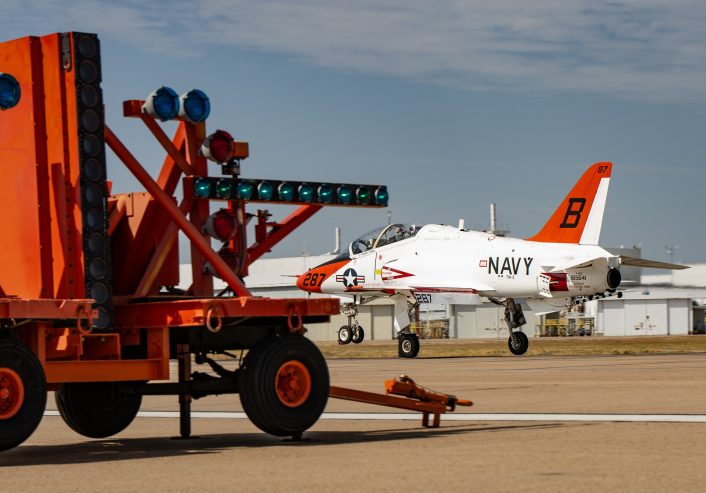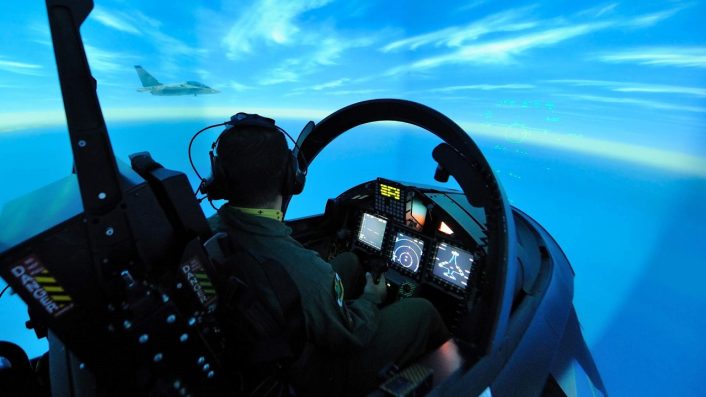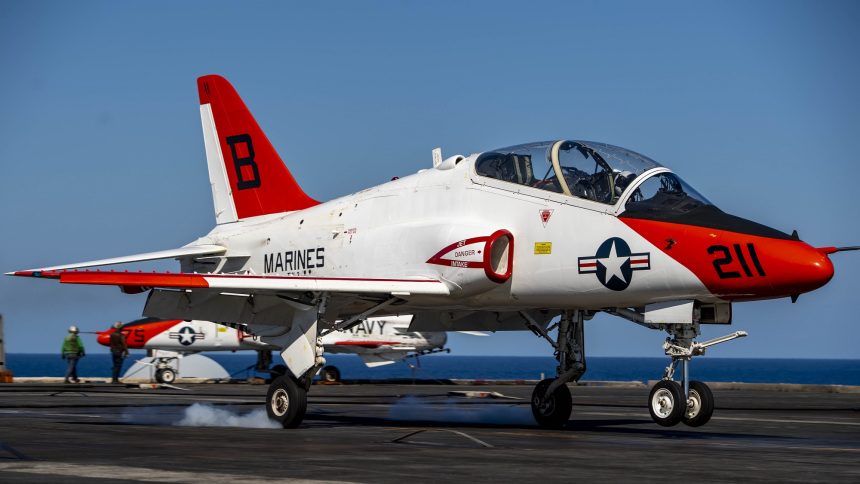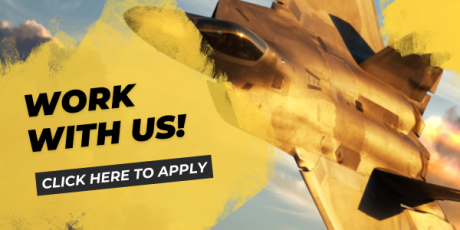The U.S. Navy released a new Request for Information for the T-45’s replacement, which will only be required to conduct Field Carrier Landing Practice (FCLP) to wave off.
On Mar. 31, 2025, the U.S. Navy released yet another Request for Information (RFI) for the program which will replace the aging T-45 Goshawk, the Undergraduate Jet Training System (UJTS). This should be the program’s fifth RFI, although the final Request for Proposals (RFP) was also expected in late 2024.
The new RFI
The new RFI comes with updated dates, as the Request for Proposal (RFP) is now expected by December 2025 with a projected contract award in January 2027. The fourth RFI previously pushed the contract award date from Fiscal Year 2026 to Q2FY2028, but the latest RFI now mentions that the “UJTS program is on an accelerated procurement timeline.”
This time, however, it appears that the Navy has finally reached a critical decision, as in 2024 the service was still “carefully considering whether the UJTS air vehicle will need to conduct Field Carrier Landing Practice (FCLP) to touchdown.” In fact, the new RFI now states that “the UJTS air vehicle will only be required to conduct Field Carrier Landing Practice (FCLP) to wave off.”
As we previously reported, a good portion of the training command’s syllabus is centered around the FCLP, which allows new pilots to train on land bases for the entire approach and landing maneuver as performed on the aircraft carrier, just short of the arrested landing. With the new requirement, future student pilots will only perform the approach phase of the current FCLP, going around once reached the minimums, without touching down on the runway.

The Navy says that this decision, which sets a completely different route compared to the T-45 Goshawk and, previously, the T-2 Buckeye, is “due to advancements in operational platform landing modes and in ground-based simulation.” This means the new naval aviators will rely more on automation and perform complete FCLPs only in the flight simulator.
Also, this decision would allow for quicker development, as the new trainer aircraft will not require complex and lengthy structural modifications to be adapted to the new role. This is also likely of two overarching goals that the service has now set for the UJTS program: speed to Initial Operational Capability (IOC) and quality of training.
Furthermore, the RFI states that, “In an effort to ensure speed to IOC, the Government desires to keep the contractor development timeline (contract award to delivery of 1st test aircraft) no more than three (3) years in duration.” The service, in fact, needs quickly a replacement for the T-45 fleet, as it keeps facing problems, with the latest grounding issued on Mar. 11, 2025, after an engine malfunction prior to takeoff which resulted in damage to the engine.
With the new RFI, the Navy is also requesting industry input to finalize the requirements for the Ground Based Training System (GBTS). The service is “contemplating a four-tiered GBTS product line, consisting of Operational Flight Trainers (OFT), Unit Training Devices (UTD), Cockpit Procedural Trainers (CPT), and Desktop Avionics Trainers (DAT), but seeks industry’s input on an appropriate mix.”
The GBTS is also anticipated to include “Live/Virtual/Constructive (LVC) integrated training that allows real-time insertion of virtual threat environments in aircraft and simulators within a single training event comprised of connected training devices.” Also, the Navy is seeking input on courseware, Diminishing Manufacturing Sources and Material Shortages (DMSMS), reliability and maintainability, and hyper-converged infrastructure.

The 2024 RFI
While the latest RFI focused on the Ground Based Training System, the previous one focused on the aircraft itself. Many were already known from previous iterations of the RFI, while others were updated to reflect new requirements.
The attribute requested for the cockpit feature the safety and environmental characteristics common to all modern aircraft, including zero-zero ejection seats and bird strike-resistant canopy. The latter is quite obvious as the Navy lost some aircraft because of the bird strike problem and obviously wants to minimize the chances of this happening again.
As for the cockpit configuration, the service is requesting an aircraft with Head-Up Display (HUD) and a “single, primary touch-screen display in both cockpits”, as well as Helmet Mounted Displays (HMD) with integrated Augmented Reality (AR) and capable of being used simultaneously or individually in the FWD and AFT cockpit. The Large Area Display (LAD) requirement was expected as the Navy already employs LADs on the F-35C and F/A-18 Block III aircraft that would be flown by pilots graduated on the UJTS.
The RFI then moves to suitability and performance attributes, beginning from the capability to maintain fixed Angle of Attack (AoA) approach targeting 3.25 degree glideslope while maintaining field of view during unflared landings. This RFI said the aircraft was expected to perform 6-10 unflared landings per training event, or 1,400 landings per year assuming 400 flight hours per year, and a total of 10,000 hours of airframe fatigue life and 35,000 landings.
Because of this, the structural design would have needed to account for very significant stresses during the landing, possibly needing structural modifications. Now that the new RFI stated the FCLPs will only be conducted to wave off, without touchdown, this requirement is likely to change.

As for the performance, the Navy is looking for an aircraft capable of a speed of at least Mach 0.9/450-500 KIAS, sustained AoA over 20 deg, sustained load factor of at least 6 G, operating ceiling of at least 41,000 ft and turn rate of at least 12 deg/sec. The RFI also mentions wing and/or wingtip pylons for stores carriage, which in the attachment are better specified as external fuel tanks, luggage pod and PMBR (Practice Multiple Bomb Rack) with six MK-76 type practice bombs.
The new UJTS aircraft is also required to integrate the new Precision Landing Mode (PLM), which is now on F/A-18s and F-35s and will eventually be the standard method for approaching the aircraft carrier for all naval aircraft. PLM not only drastically reduces the number of corrections required during the final approach to the aircraft carrier, but could also lower the demand on the structure of the aircraft, reducing the need for structural modifications.
The RFI then lists all the desired attributes for instruments and navigation, identification, controls, displays, recorders, which reflect the avionic capabilities of currently produced aircraft. Then the mission systems list features the delivery of air-to-ground stores, Embedded Synthetic Training and augmented reality training system. This appears to be the first time the employment of practice weapons was mentioned in the UJTS RFIs.
The list goes on with the simulated sensors and systems, which include radar (although the previous RFI investigated the possibility of an actual radar), Electro Optical/Infra-red (EO/IR), Radar Warning Receiver (RWR), Electronic Support Measures (ESM), Electronic Warfare (EW), Electronic Attack (EA). Also included are the simulated employment of gun, air-to-air and air-to-ground weapons and an Automatic Ground Collision Avoidance System (Auto G-CAS).









